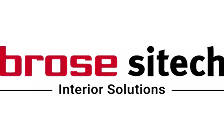Digital Transformation Roadmap
To ensure successful digital transformation, it is crucial to have a well-defined strategy that serves as a reference point for the implemented changes. To achieve this, it is beneficial to prepare a Digital Transformation Roadmap during the initial phase – a document that summarizes the knowledge of the current situation, outlines the path to the strategic goal, and includes a range of proposed initiatives. These initiatives are hierarchically organized to make decision-making regarding their order or level of implementation more manageable.

Key Values
See what benefits your company can gain from a well-developed Digital Transformation Roadmap.
Consistent development strategy and a clear objective
Predictable investment plan for the upcoming years
Coordinated development across all areas
Carefully planned and deliberate expenditures
Achieving benefits at every stage of implementation
Steps to Develop a Digital Transformation Roadmap
Although digital transformation is an ongoing Steps to Develop a Digital Transformation Roadmapprocess within an Organization, creating a Digital Transformation Roadmap to initiate this process can be broken down into the following steps:

Products of the Project
Deciding on the Digital Transformation Roadmap, you will receive:
Success Stories
Discover what companies have to say about choosing to build their path to Industry 4.0 with us
Transforming the Industry Together
See what has been gained by companies that have opted for digital transformation with ImFactory.
FAQ
Expand your knowledge on the topic by seeing the most frequently asked questions from clients interested in creating a Digital Transformation Roadmap.
In simple terms, a Digital Transformation Roadmap is a tool that helps guide an enterprise through the process of digital transformation. It’s a document that can be likened to a strategic plan or a portfolio of tasks (projects) and initiatives, along with their interdependencies.The Digital Transformation Roadmap serves primarily to define objectives and chart the path toward achieving them. Visually, it illustrates the relationships between tasks, outlines milestones with their distribution in time, and serves as the initial framework for implementing technological changes. This roadmap summarizes our current position, establishes our envisioned destination based on the company’s vision and strategic goals, and outlines the pathways we can follow in pursuit of these objectives.
The time required to develop a Digital Transformation Roadmap is directly proportional to the scope it aims to cover – much like any other project, the preparation time increases alongside the expansion of the scope and the number of areas we intend to address. The time needed to complete the roadmap can vary based on factors such as the quantity of processes under examination, the size of the facility, and the functions to be assessed (e.g., production monitoring, traceability, planning, scheduling, asset and maintenance management).
The cost is always calculated on an individual basis for each Client. In estimating the cost, we consider several variables – primarily the characteristics of the specific company, the scope and complexity of preparing a Digital Transformation Roadmap, the extent of resources and time it will require, time constraints, and, most crucially, the unique and specific needs of the company. Typically, the budget range for preparing a Digital Transformation Roadmap is between PLN 20,000 and 70,000.
Because of the advantages it offers. Such a roadmap supports strategic thinking and decision-making processes, aids in formulating a digital transformation plan, outlines milestones, specific tasks, and intermediary stages, and even uncovers previously unnoticed dependencies and connections. It promotes the efficient allocation of resources and accelerates the realization of digital transformation benefits quicker and on a larger scale. The roadmap increases the chances of success by steering away from thoughtless technology adoption, only for the sake of following the digitalization trend. The focus lies in selecting solutions that genuinely benefit the company and its employees, not to replace, but to complement and enhance their work.
You can do the bare minimum, go for the maximum, or take no action at all.
The minimum involves conducting ADMA survey, which we consider a preliminary step towards creating a Digital Transformation Roadmap. Upon commissioning this research, the Client receives a preliminary report that offers conclusions drawn from evaluating the current state and level of digital maturity within their company. The data is presented in a user-friendly manner, including statistics comparing the company’s performance to industry averages, the average in Poland, the average in Europe, and other benchmarks.
For the maximum approach, beyond the foundational ADMA research and Digital Transformation Roadmap creation, we suggest formulating a concept, specifications, or a technical project for the most advanced and extensive initiatives, requiring more comprehensive descriptions.
The third option is to take no action at all and rely on your own intuition or resort to the tactic of putting out fires.
NO, they can be created for businesses of any size, only the level of their complexity will vary.
There are three main steps:Preliminary Analysis, Preliminary Assessment, Proper Analysis. Occasionally, a fourth step is also included – the First Project Concept. This final step in developing a Digital Transformation Roadmap is optional. Typically, it is carried out as we progress further to a subsequent project and becomes that project’s part.We encourage you to review the brochure for a more in-depth description of each of these steps.
On each step of building the roadmap, the products of that stage are gradually delivered to the Client. The first step – Preliminary Analysis – c includes an analysis of the current state, meetings, and discussions aimed at establishing the project background and selecting the appropriate approach. The product of this step is a preliminary report, prepared based on the digital maturity assessment, ADMA research.The second step – Preliminary Assessment – primarily involves on-site visits. Consultants audit selected areas at the Client’s facility and document the existing state in Gemba. As a result, process observations are delivered in the following order: observations + diagnosis + suggestions. At this point, both parties have a clearly defined primary objective for the digital transformation. The third step – Proper Analysis – is based on processing the data gathered in the previous steps. As a result of this step, the Client receives tangible end products that constitute the Digital Transformation Roadmap – beginning with a list of initiatives (projects) aligned with the organization’s business goals and the primary objective of the transformation, through a Pain-Gain analysis aiding project prioritization, to a map of correlations between initiatives, and a final report containing conclusions and recommendations.
YES. Effective communication and collaboration directly impact the quality of the Digital Transformation Roadmap, making the involvement of employees on the Client’s side crucial. The extent of their participation may vary depending on the scope of work. It is impossible to determine exactly how many working hours will be needed. When preparing a digital transformation plan, we estimate the degree of engagement required from the client. It is advisable to allocate 2-3 days for workshops and site visits, as well as several additional hours for meetings and supplementary discussions. During workshops and site visits, everyone is involved – from top management to front-line employees. Furthermore, an extra day should be scheduled for delivering process observations and an additional day for presenting the project results.
Although preparing the Roadmap is a project, the digital transformation of a business is a process. Therefore, we recommend evaluating and updating the Digital Transformation Roadmap periodically (approximately every year or two). Over time, there are changes in the context, business environment, available technologies, and competitors’ actions, which necessitates adjusting our strategy and plan. While preparing the next iteration should indeed be quicker and simpler, there’s an additional consideration – revisiting the achievements thus far.
Simply follow these steps: visit the ImFactory website and click the Free Consultation button located in the top-right corner, fill out and submit the form. Our consultants will contact you to discuss the details and further steps.
Digital Transformation Roadmaps, being integral to a company’s strategic approach, are safeguarded by a confidentiality agreement that legally protects business secrets. Hence, we are unable to share them, even in part. Nevertheless, we encourage you to reach out to us – our consultants are more than willing to describe the structure of a Roadmap and outline potential initiatives it may include.
In line with the #paperless concept, we deliver content digitally, in the form of electronic documents. Our Roadmap comprises a presentation incorporating process observations, a spreadsheet detailing initiatives along with a Pain-Gain analysis, and a graphical representation illustrating the correlations between these initiatives.
Challenges primarily arise at the phase of gathering information and defining needs. Understanding every facet of a factory’s operation in a span of a few days of auditing is an unattainable goal. We adhere to the approach of gathering information in Gemba – getting as close as possible to the process. We talk with operators on the production floor, often without the presence of their supervisors. We conduct interviews and group meetings, aiming to spark discussions without steering them toward specific solutions or implying answers – all to get the most accurateinformation about the processes. Nevertheless, a significant challenge that we encounter is limited openness. The more a company realizes that concealing or omitting problematic issues proves counterproductive, and that discussing problems without fear of criticism is crucial, the more remarkable results we can achieve together.
The scope is generally similar, though the emphasis will be put on different aspects depending on the industry. For example, in the pharmaceutical or food sector more time may be dedicated to analyzing processes related to traceability, quality control, and legal or regulatory compliance. On the other hand, in high-volume industries, the focus may shift to monitoring equipment for availability and performance, as each working second holds significant importance.
Digital Transformation Roadmaps are valuable not only to the managerial staff responsible for shaping a company’s strategy, but to each employee and an external stakeholder involved in executing that strategy. Similar to the cascading of overall company strategy goals, which involves decomposition to lower levels and subsequent specification, the same principle applies to digital transformation strategy – goals originate at the top level, but they should be announced and communicated across the whole organization. This approach ensures the execution of tasks in accordance with the culture of continuous improvement.
By combating technological procrastination. Having a clear strategy facilitates discussions regarding technology investments. Digital transformation of a business seems like a formidable task that may raise concerns. A Digital Transformation Roadmap serves as a means to mitigate this risk – breaking down a substantial endeavor into smaller segments makes them appear more attainable, prompting quicker engagement in their implementation We do it more effectively than competitors, with better cost optimization. We plan considering the necessary resources and set forth smaller business tasks for execution. With this approach, we achieve better results and deliver value quicker.
We receive a plan crafted by individuals thinking “outside of the box,” providing a fresh perspective on the company’s challenges and needs. This enables us to uncover new, previously undiscovered pathways to our goals. The Digital Transformation Roadmap enhances our ability to seek funding and is frequently a requirement for grant competitions. We gain an understanding of the necessary resources, which facilitates future decision-making (Understanding estimated costs, approximate timeframes for executing smaller projects, and the scale of potential benefits that can be achieved through specific initiatives).
Yes, it is possible. The greatest synergy is achieved when the entire organization follows a unified direction, but depending on the company’s structure, the digital transformation strategy can be prepared separately by single units. This approach is particularly effective in federal or holding structures, where there is a high degree of autonomy at the local level. We have encountered situations where separate departments or plants had developed their own strategies or even mini-missions. Similarly, the digital strategy and the Digital Transformation Roadmap can be adapted to specific units within the organization.
NO. When we talk about digitalization, we are referring to a huge and complex venture that unfolds over an extended period, so the notion of success is also spread out over time. We establish milestones that mark the completion of specific phases and sets of tasks. Our primary focus should be on these milestones and the partial objectives linked to them. Achieving each one of them is a success worth celebrating. The Digital Transformation Roadmap presents various paths to reach the overarching digitalization goal. However, it does not dictate that we must follow all these paths simultaneously. Instead, we can choose the one most suitable for us to optimize resource utilization, mitigate risks, and attain benefits quicker. Every step toward the primary objective contributes to the success of digitalization. Nevertheless, it is a misconception to assume that completing a finite series of actions from the infinite array of possible initiatives encompassed by the term “digitalization” will be the sole and adequate measure of success. This completion is not the sole guarantee of achieving and sustaining success.
Long-term. Generally, the Digital Transformation Roadmaps that we develop span a duration of 3 to 5 years. Creating Roadmaps for a shorter period falls short of achieving the essence of constructing a genuine strategy, while planning for a longer time might not yield valuable insights. Considering the rapid pace of market and technological changes, such a map would swiftly lose relevance.
The extent to which it aligns with the company that commissions it. The hallmark of a good Digital Transformation Roadmap should be its personalized nature and adaptability to the specific operational context of the organization – whether it underpins the company’s strategy, mission, and vision, and whether it harmonizes with the trajectory of the enterprise’s growth. The roadmap should not be just a template of initiatives that lack relevance to the company’s realities or operational environment.
The approach to communication largely depends on the objective. We will use a different form of contact to communicate work progress, another to discuss problems and work on solutions, another to exchange views, and another to transfer knowledge. It is essential to pass information quickly, accurately and effectively to foster mutual understanding. During the construction of the Digital Transformation Roadmap, we adopt a hybrid approach – organizing both remote and in-person meetings, on-site visits, and interviews. Our communication strategy with stakeholders is tailored to the project’s phase, which leads us to alternating between synchronous and asynchronous collaboration. For instance, at the information gathering stage we may opt for individual or group interviews, while workshops or inspiration sessions might be employed in other stages. Materials provided to the Client for preparation are an example of asynchronous work.
The Digital Transformation Roadmap is developed based on selected processes, particularly for larger enterprises that encompass numerous production and supporting processes. The eventual cost of including every additional process in the Digital Transformation Roadmap would become too high at a certain point. This approach would not only prove impractical but also overly time-consuming. For this reason, we operate with a representative sample and a core group of supporting processes that undergo auditing. These processes typically include quality control, supply chain management, planning and scheduling, maintenance, financial controlling, and business continuity assurance.
Yes, the Digital Transformation Roadmap does indeed incorporate the As-Is analysis. The current state analysis appears in the first and partly in the second step of constructing a roadmap. It’s important to note that we don’t comprehensively map out the entire current process, nor do we develop a detailed model during the “As-Is” analysis. Instead, we focus on identifying and capturing the process elements crucial for digitalization and optimization. Our approach involves formulating an initial digital maturity report following the ADMA methodology and presenting process observations gleaned from audits conducted in the Gemba.
YES. A Digital Transformation Roadmap can be prepared at any stage of a company’s maturity. However, it’s typically targeted primarily at companies with more complex structures.
NO. As a principle, initiatives are not limited to the product and service offerings of ImFactory or other suppliers mentioned by name. They are designed in a manner that avoids specifying particular products but rather focuses on product categories that can be utilized. This is to ensure their versatility. In exceptional cases, if a Client is committed to incorporating solutions from a particular supplier that is standard in their organization, we can tailor the Digital Transformation Roadmap accordingly.
Based on our observations, the most significant risk is internal resistance and people’s reluctance to embrace change. It sometimes occurs that employees approach technology with caution and mistrust – they fear the unknown or simply resist using new solutions because of old habits. Another issue may be commitment fading over time, coupled with overly detailed analysis of subsequent steps and endless discussions that hinder the company from acting. This meticulous focus on details and slow decision-making processes cause the company to lose its competitive advantage. It’s important to note that these risks are tied to the human element, rather than the technology itself. Therefore, any organizational change demands a particular focus on the people involved, and the solution may lie in employee training and ensuring effective communication.
When the Digital Transformation Roadmap project is completed, the next step involves selecting the areas of focus and prioritizing initiatives to be implemented first. Subsequently, the process transitions to execution, monitoring, and assessing outcomes. Over time, adjustments and refinements are made to the plan, aligning it with the progression of subsequent activities.If a company chooses to start with more comprehensive and developmental initiatives, it is worth noting that before moving on to their implementation they can engage us to develop concepts, specifications, or technical projects for these initiatives. This additional step can provide a more detailed description and, to an extent, protect the company from potential setbacks. An essential part of the Digital Transformation Roadmap’s lifecycle is its periodic evaluation and updates.
In addition to our core services, we provide consulting support, MES and APS system implementations, programming services, and the development of migration projects. If required, we also offer assistance for individual initiatives, including:Guiding the selection of specific solutions, Creating product offers, Designing concepts, Preparing specifications, Developing technical designs.
Check if Digital Transformation is the Answer to Your Company’s Needs
The Free Consultation Process:



























































